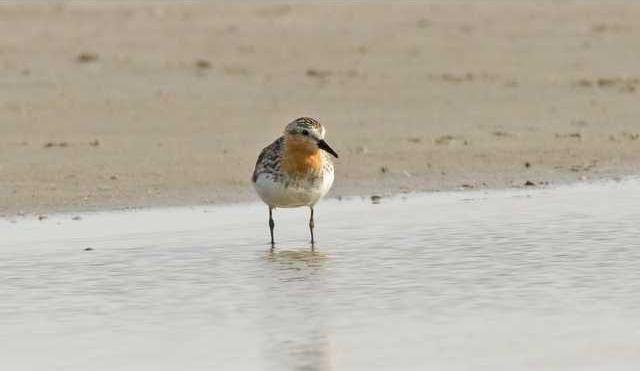STAFFORD COUNTY – Quivira National Wildlife Refuge in Stafford County was recently visited by an adult-phase red-necked stint, representing a potential first-ever Kansas siting for the species, according to information from the Kansas Wetlands Education Center. This small sandpiper, considered very rare in the lower 48 U.S., was seen by dozens of birders at Quivira’s Little Salt Marsh July 1 and 2.
The bird, first observed July 1, was described as a “breeding adult plumage Red-necked Stint at the northeast corner of the Little Salt Marsh, just southeast of the main outlet,” noted a posting on the center’s website. The stint was re-sighted and photographed on July 2 and the birding experts agree with the species’ identity.
About the size of a sparrow, the red-necked stint has a whitish chest and belly, brownish wings and back, and a black bill and legs. The striking feature of an adult is the reddish-brown throat and sides of face, bordered on the sides and bottom by blackish streaks.
If accepted by the Kansas Bird Records Committee, this bird would represent the first-ever occurrence of the species in Kansas, the center information noted. An estimated 60-70 visiting birders, from at least six states, visited Quivira to observe the bird. Subsequent searches on both Tuesday and the July 4 holiday did not produce any sightings.
The addition of the red-necked stint brings the total species observed at Quivira to 345 species, a remarkably high number for a site in central United States.
The red-necked stint is a Eurasian species and rare breeder in western Alaska according to The Shorebird Guide. In the spring, the stints are an accidental species, most likely to be found along the Pacific coast. There are, in fact, few records red-necked stint for the interior United States.
Rare bird visits refuge





